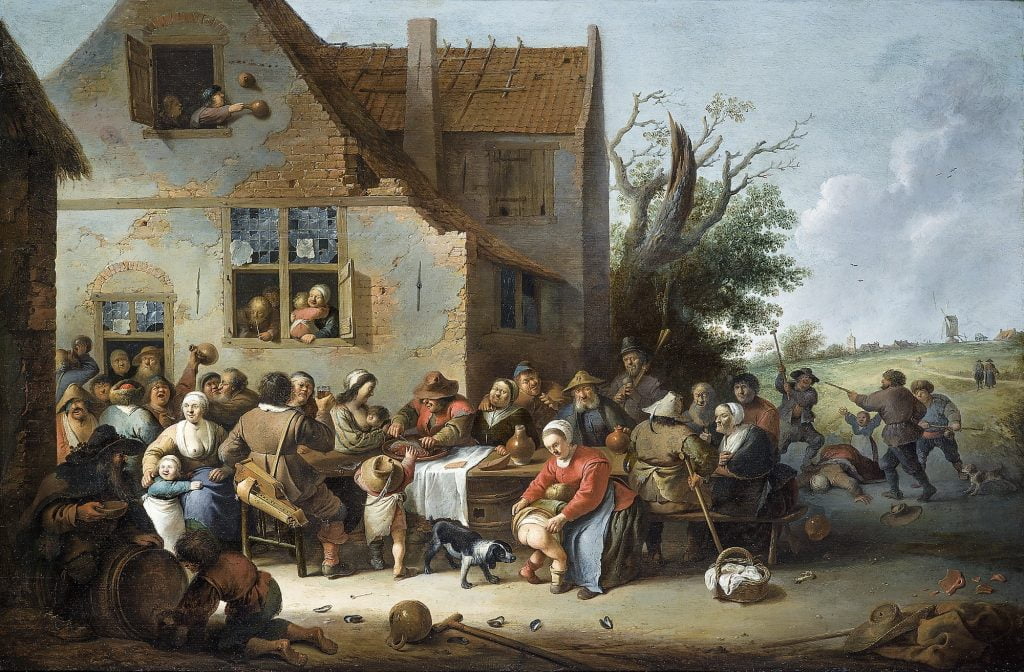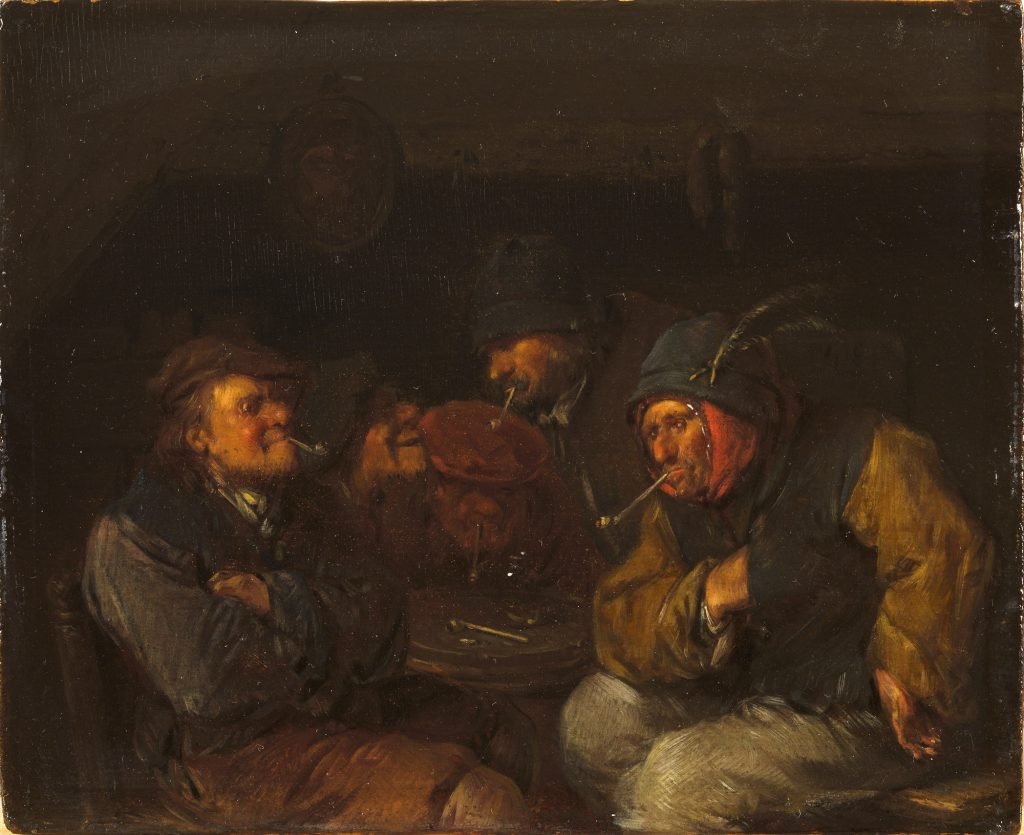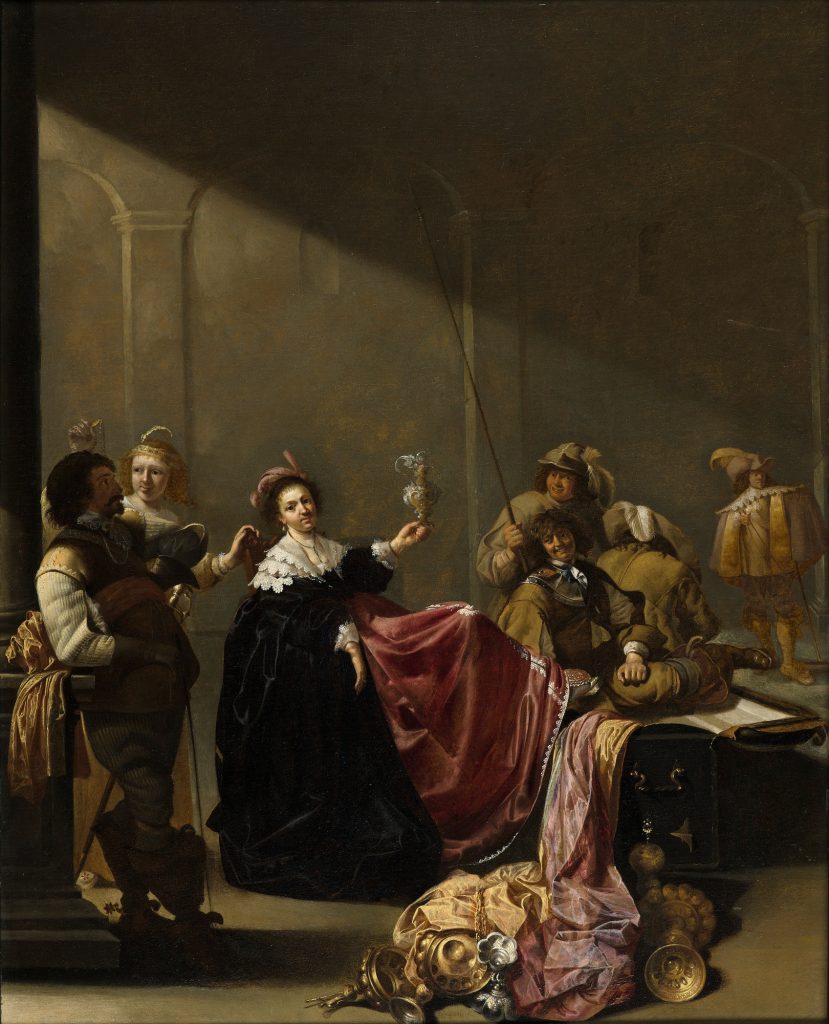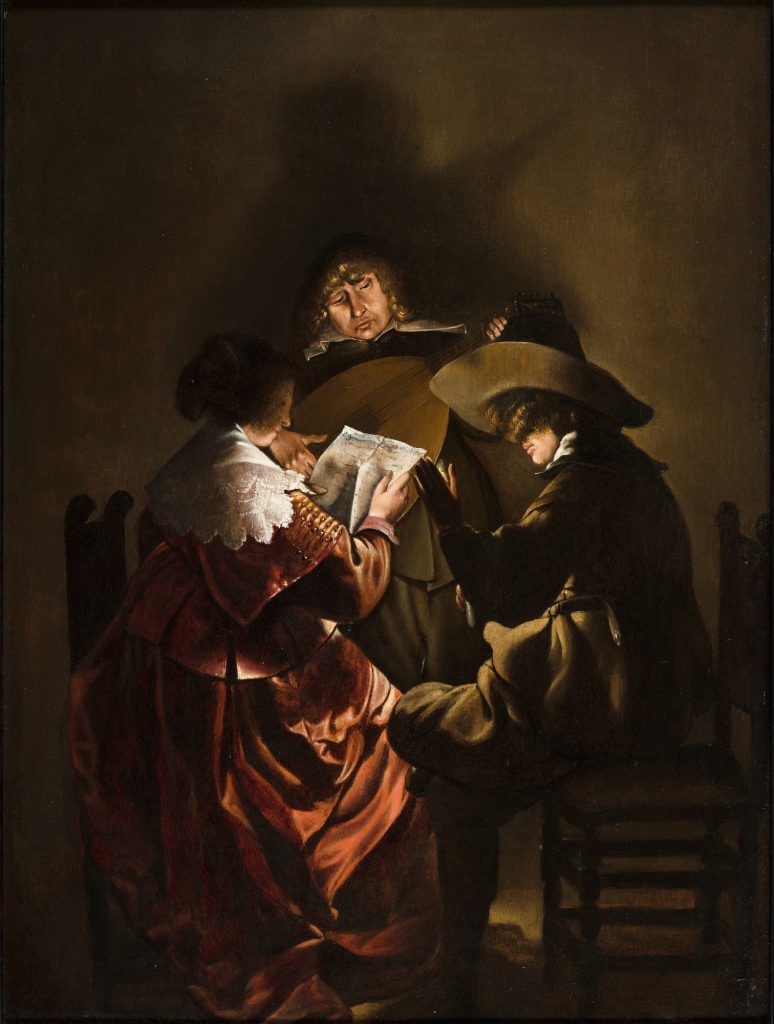Pieter de BLOOT
Peasants Making Merry Outside An Inn
Oil on panel, 65.5x98.8cm
Dutch landscape and genre painter active in his home town Rotterdam. There are no records documenting under whom he studied but he produced a surprisingly large number of works, depicting mostly coarse peasant scenes that reveal the influence of Adriaen Brouwer and David Teniers II. Countryside scenes with peasants was a subject that Pieter de Bloot specialized in with passion, as can be seen from his “Drunken peasants fighting” (the National Museum, Poznan, Poland) and “Dancing in a tavern” (the Museum of Fine Arts, Budapest, Hungary). His landscapes were influenced by Jan van Goyen, although the latter included more figures and was richer in narrative detail. One of de Bloot’s more humorous works is his early interior painting “In the lawyer’s office” (1628, the Rijksmuseum, Amsterdam, Holland), an interesting record of everyday life in Holland in the 17th century, depicting the clients queuing at the counters together with their children and dogs. Bloot also painted religious subjects (“St. Martin and the beggar”, the Victoria and Albert Museum, London, England).
This painting with the tavern scene can be considered one of the most brilliant works by Pieter de Bloot, with its rich narrative details rendering a vivid picture of the 17th century peasant life. The tavern yard is full of merrymaking men, women and children who are assembled around a long table. Figures can also be seen in the doorway and windows of the rickety thatched tavern located in the middle of the composition. To the right, the view opens on a flat Dutch landscape with a village and a windmill in the distance, while a group of peasants are fighting around the tavern’s corner. The group of brawling peasants is contrasted by a company of women and children doing their domestic errands in the foreground.
This boisterous and slightly drastic scene carries a moral and didactical implication that drinking leads to vulgarity and violence. With this allusion, de Bloot followed the tradition of his immediate predecessors, Adriaen Brouwer and Adriaen van Ostade. However, it appears not to be his intention to ridicule or condemn the conduct of his coarse characters but rather to create an admirable and amusing scene of rural life.
Provenance:
Private collection, Switzerland





